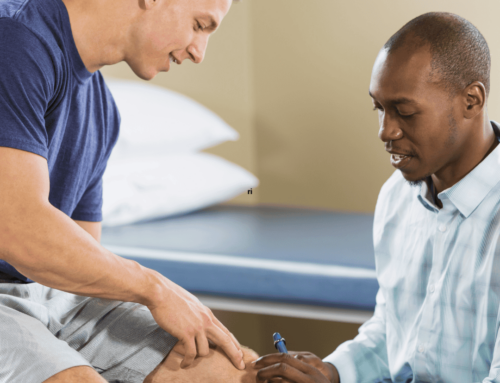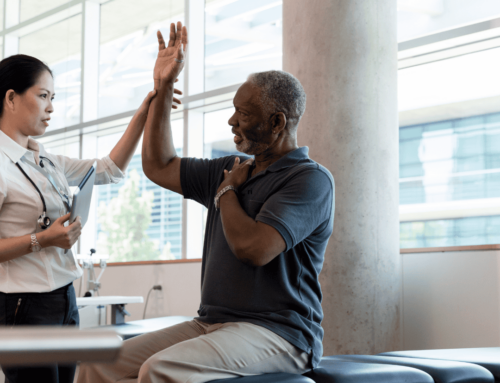I’m Dr. Hassan, a Board-Certified Physiatrist and Independent Practice Owner. I help physiatrists start and grow their own profitable practices so they can achieve financial independence and live without limits.
Foot drop is an overlooked condition patients experience after a stroke. This is a condition in which the muscles of the foot are weak, causing the inability of the ankle to dorsiflex and elevate the toes. This, in turn, causes the toes to drag. The dragging of the patients’ toes causes them to be at an increased risk for falls. This also psychologically impacts the patient by leading to or increasing their fear of falling. As the fear of falling increases, this leads to a loss of ambulation, subsequently making the patient less mobile, putting them at increased risk for complications of immobility.
Working with an orthotist or orthotics company, rehab doctors can fabricate a custom ankle-foot orthosis (AFO), which places the foot and ankle at a 90-degree angle, increasing the foot’s clearance on surfaces and helping the patient achieve a more normal gait pattern. This also helps the patient feel more stable when walking, thus causing fewer near-fall events, making the patient less likely to develop a fear of falling, and helping them to remain more ambulatory for a more extended period.
Prosthetics and orthotics also work with patients who sustain amputations. Patients who sustain amputations have undergone a life-altering event. They can suffer from physical and psychological pain, and, in the process of grieving their loss of limb, may develop depression. Evidence-based medicine has shown that amputee patients have better post-op outcomes and are transitioned quicker to obtain a prosthesis when they’re admitted to an acute inpatient rehab after their acute care hospitalization, as opposed to going to a skilled nursing or directly home.
During acute inpatient rehabilitation, patients:
- receive three hours of highly skilled therapy
- are cared for by rehab certified nurses
- have access to neuropsychologists who can address the impact of their loss of limb and help them by providing them with coping skills and community resources
- have a rehabilitation team who focuses on preparing the patient’s residual limb for prostheses and provides education on skincare, pain management, as well as limb shaping
- are fitted for a shrinker or a compression sock to help control swelling and stabilize the volume of the residual limb
- work on muscle strengthening with the therapy team, assisting the patient to understand how to avoid contractures, (tightening of the muscles which may make it difficult for them to obtain a prosthesis)
- begin the pre-prosthetic training to help desensitize the residual limb and help manage and prevent the development of scar tissue
- work with a prosthetist to discuss and walk through the process of obtaining a prothesis including building the test socket and establishing ongoing care once they’re discharged from rehab
Prosthetics and orthotics have established a nurtured relationship with providers that care for these patients.
For example, the neurology team, the vascular surgery team, the orthopedic team, and the neurosurgery team want excellent outcomes and the best for their patients. The prosthetist and the orthotist know that rehabilitation physicians and acute level of care can help provide these outcomes and the best care for these patients.
As a result, partnering with the prosthetist and orthotist allows you to leverage their relationships to educate these providers on the benefits of acute inpatient rehab and develop a pipeline for you to be involved during the acute care hospitalization to get consulted and help with discharge planning and help facilitate a transition to acute inpatient rehabilitation.
The prosthetist and orthotist also afford you a platform to discuss how acute inpatient rehab helps decrease mortality of amputee patients, potentially reduces subsequent amputations in the future, provides greater medical stability for these patients, and leads to more frequent prosthetic acquisition on this all-important patient population.
—
Attention, Physiatrist! Stop leaving money on the table. Learn how to make the most of each encounter. Schedule a FREE 15-minute Strategy Session NOW to learn more: https://calendly.com/hassan-akinbiyi/15min
—
I’m Dr. Hassan, a Board-Certified Physiatrist and Independent Practice Owner. I help physiatrists start and grow their own profitable practices so they can achieve financial independence and live without limits. Follow me on social media @DrHassanRehab.







